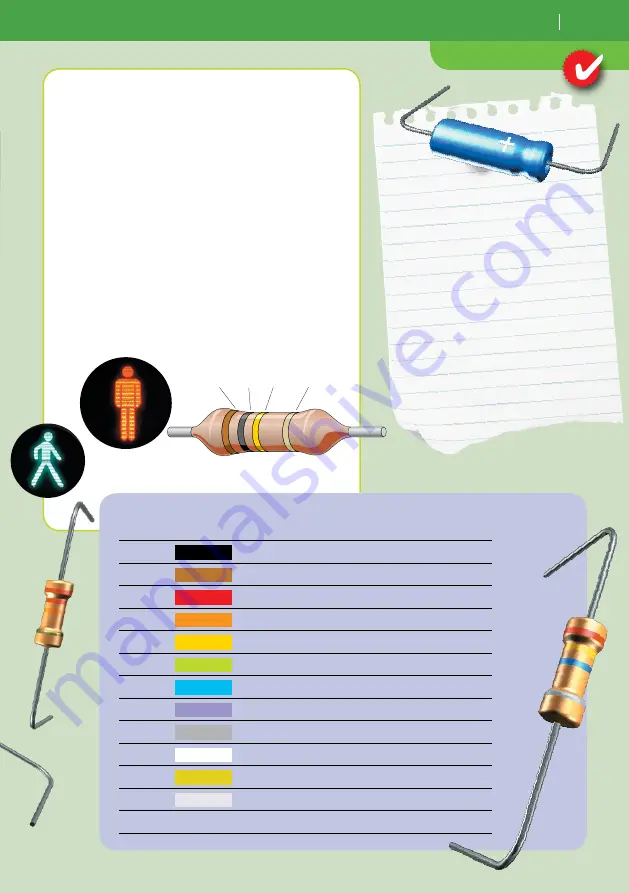
THE RESISTOR
C
O
L
O
R
C
O
D
E
Rather than having their resistor values printed
on them in numbers, these tiny components use
colored rings. That means that they are easy to
read regardless of their orientation.
Depending on their position, the individual rings
designate the first or second digit of the number
value along with the number of zeros that follow.
The table below shows which ring stands for
which digit or for the following zeros, and what
each color means in terms of numbers.
CHECK IT OUT
Timer Switches
33
Black
0
0
-
Color
1st Ring
1st Digit
2nd Ring
2nd Digit
3rd Ring
Zeros
4th Ring
Tolerance
Brown
1
1
0
1 %
Red
2
2
00
2 %
Orange
3
3
000
Yellow
4
4
0 000
Green
5
5
00 000
Blue
6
6
000 000
Purple
7
7
Gray
8
8
White
9
9
Gold
x 0.1
5 %
Silver
x 0.01
10 %
No Ring
20 %
brown
Example: 100 Kiloohm = 100,000 Ohm
(1)
(0)
(0000) (5 %)
black yellow gold
red
red orange gold
Black
0
0
-
Color
1st Ring
1st Digit
2nd Ring
2nd Digit
3rd Ring
Zeros
4th Ring
Tolerance
Brown
1
1
0
1 %
Red
2
2
00
2 %
Orange
3
3
000
Yellow
4
4
0 000
Green
5
5
00 000
Blue
6
6
000 000
Purple
7
7
Gray
8
8
White
9
9
Gold
x 0.1
5 %
Silver
x 0.01
10 %
No Ring
20 %
brown
Example: 100 Kiloohm = 100,000 Ohm
(1)
(0)
(0000) (5 %)
black yellow gold
red
red orange gold
Caution:
Note the polarit
y!
Because the insulation layer of
an electrolytic capacitor is
produced electrochemically
,
this component is sensitive to
reverse polarity
. So you have to
be careful to install your 100-µF
the right way around — look
for the (+) sign!
Summary of Contents for Electronics
Page 52: ...712 301 ...































